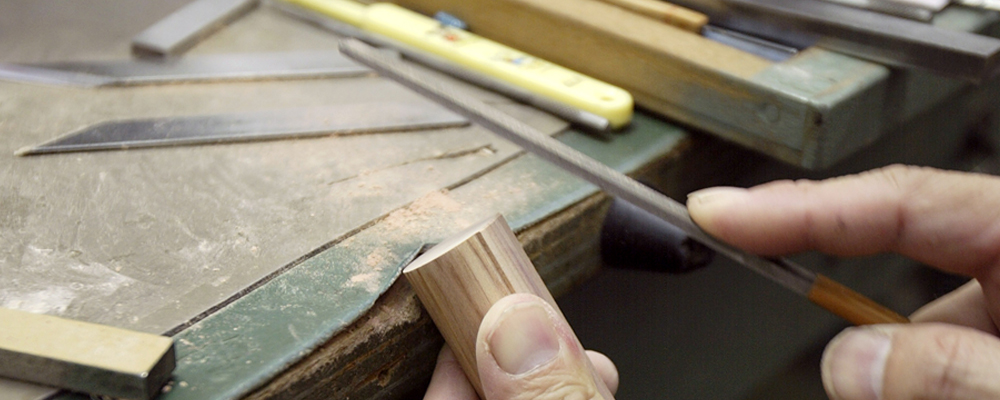How a Recorder is Made
Wooden recorders
Character of the wood becomes the character of the sound
A variety of different woods are used to produce wooden recorders. Also, depending on the source country and the age of the wood, the timbre can vary even among instruments made from what might be described as the same material.
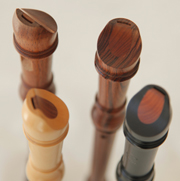
A variety of woods are used to make recorders
Main varieties of wood, and associated timbres
Maple (Acer spp.)
Specific gravity after drying of around 0.6. Sweet, clear sound, with an exquisite harmony, prominent when playing within an ensemble.

Castelo wood
Specific gravity after drying of around 0.7. Sweet, gentle timbre, with a tone that expresses subtlety and delicacy rather than strength or vigor. Not classified formally as a member of the boxwood family, but referred to as "castelo boxwood" as its popular name.

Rosewood
Specific gravity after drying of around 1.0. Timbre similar to that of Kingwood, but with gentle and sweet highlights.

Kingwood
A particularly dense material, with a specific gravity after drying of around 1.0 to 1.2. A strong sound but also sweet, and with a clear feel.

Ebony
Specific gravity after drying of around 1.0. A timbre where sweetness can be felt even amid its strength, with this elegance as its charm.

The vitality of a recorder depends on its wood
If you look closely at wooden recorders, you'll see that the grain is vertical (parallel to the bore) in all of them.
This is because they are made in the direction least prone to causing breakage. Wood is prone to breakage in certain directions, and in particular the wood at the core of the tree is liable to break in any direction, so cannot be used to make recorders.
Tone holes and the window are made using wood from the surrounding parts, so that the grain runs vertically through the instrument. If the recorder is made this way, a repair should be possible in the event that this is necessary.
As all parts of the bore, including the head joint, middle joint and foot joint, are made the same way, the finish of a completed recorder has some similarities to when the wood from which it is made was growing naturally.
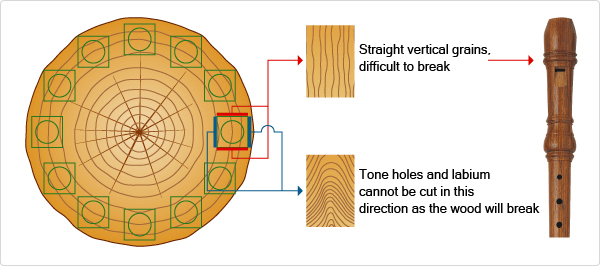
Also, even if the instrument is made in an orientation that reduces the likelihood of breakage, there can be other issues. One such situation is when fine vessels, too small to be seen with the naked eye, run diagonally through the wood. When that is the case, air can leak and the sound produced from the finished instrument is not as expected, so wooden recorders are made with heavy, dense wood so as to minimize this possibility.
Trees with wood that is dense and has a high density are hard to fell and work with, so producing a complex shape such as that of a recorder requires a great deal of labor. The differences in price between different raw materials are indicative of these kinds of differences in the ease with which they can be used to produce instruments.
Just one stroke with the file can influence the sound
From the perspective of manufacturing, every stage of the process is important, but while making the windway every stroke of the file changes the sound, making this a particularly important stage.
Using a file to shape the angle of the block gives the sound its stability, making a thin sound stronger.
However, it cannot be described as simply a case of shaving the wood. If too much is filed away the edge will be lost, and the production of sound - or to put it another way, the conversion of air blown into the instrument into sound - will take too long.
All the same, it's also not the case that the thickness of the edge should be so pointed that it is sharp like a knife, which makes this a very difficult part to produce. Moreover, as it is inside the bore, it must be filed while out of sight.
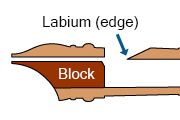
The delicately carved tip of the labium (edge). The corner of the block is also filed. This structure is the same for instruments made of wood or ABS resin.

Checking the extent to which the inner section has been filed away while carving the windway of a wooden recorder.
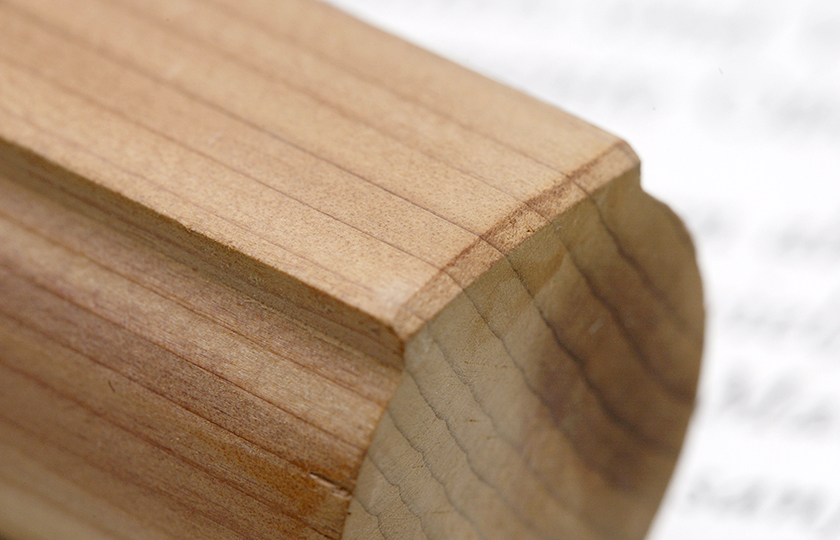
The filed corner of the block
Meticulous attention to every detail
In order to repel water, and also to improve the sound, Yamaha recorders are coated internally with linseed oil, which is also used by artists to thin oil paints.
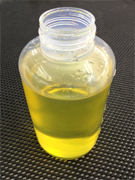
Linseed oil, used to coat the interior of the instrument
Also, in order to resist breakage and give a pleasing finish, an environmentally friendly coating is sprayed onto the outer surfaces of the instrument after it has been colored, making the surface resistant to scratches and giving the recorder an enduring luster.
The exact formula for the coating is a trade secret that varies by manufacturer. The coating influences the quality of the sound and reflects the results of many years of experience.
Also, in order to prevent breakage and give a pleasing finish, a special mixed oil is applied to the exterior.
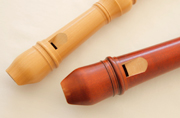
Both are made from the same maple. Coloring changes the appearance significantly.
Because of this meticulous attention to detail throughout the production process, Yamaha recorders are recognized worldwide for their high quality, and loved by the best musicians in the world.

